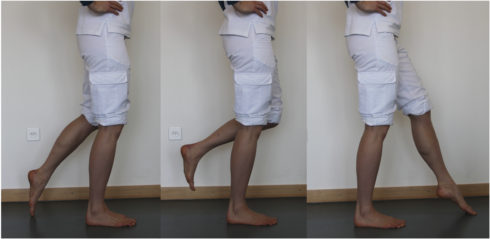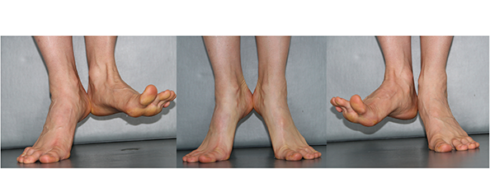Although runners are constantly on their feet, they tend to neglect their feet. Regular foot training brings speed and more stability on uneven terrain.

Author: PD Dr. med. phil. André Leumann, FMH specialist for orthopaedic surgery and traumatology of the musculoskeletal system, sports medicine SGSM, Medbase Basel Heuwaage / Orthoklinik Basel / OrthoPraxis Leumann Basel
Whether a runner takes good care of his feet, you can often see at first glance: Are their shoes already completely worn out? Do their feet have calluses, untreated warts, blisters? Are there signs of athlete’s foot or nails falling off? These things aren’t so rare in runners. But they also show the importance the athlete attaches to his feet. So it all starts with foot care.
Why is foot care so important?
The foot is the foundation of the stand and of locomotion like the roots of the tree. Its stand affects the entire axis of the leg. If the foot is unstable, the runner loses some of the energy that could otherwise bring him speed to compensate for this instability. A good “fine tuning” of the muscles improves the kick when running and this in turn is important to become faster. If you run for performance, you can gain speed with foot training. And those who run on uneven ground gain stability. This is important, because the most common injury in trail running and orienteering is pulled ligaments in the ankle. Foot training can successfully reduce the risk of such injuries.
The interplay for better coordination
The feet are moved by two muscle groups that complement each other: On the one hand, the lower leg muscles, whose long tendons extend to the forefoot. On the other hand by the small foot muscles. The actual foot training is primarily about improving the coordination and interaction of these muscles, but not about “body building” the calf muscles.
Nevertheless, it is important to strengthen the foot so that it “keeps up” with the leg during training. Nine out of ten fatigue fractures in runners occur in the ankle and foot joints. This shows that the bone there was not ready for the required training volume. Foot strengthening training can prevent such fatigue fractures.
Misalignments: Small causes with big effects
Certain foot deformities predispose to incorrect loading and overload damage – although these are different depending on the foot position. Approximately 30 to 40 percent of the population have a kink-lower foot. The arch of the foot is flattened in the longitudinal direction and at the same time the foot “bends” slightly inwards.
This deformity puts strain on the tendon of the muscle at the back of the calf. Frequent consequences are also pain in the sole of the foot (so-called plantar fasciitis) and the formation of a painful heel spur.
In the hollow foot, which is found in about five to ten percent of the population, the resulting problems are more likely to be an overload of the tendon of the fibula muscle on the outside of the lower leg, instability in the ankle and pain in the bones of the metatarsus.
A close look at your feet: what the marks reveal
If you want to know how your foot is stressed, it is best to take a look at the soles of your feet and running shoes: Are the calluses evenly distributed or are there areas with particularly high calluses? For example under the “heads” of the metatarsals? Are the soles of the shoes more worn on the inside or outside? Such observations can provide clues as to where the foot may need support, for example with insoles or special running shoes. However, it is by no means the case that every buckled metatarsal or hollow foot must be treated per se. Ideally, foot gymnastics should be combined with leg axis training because the foot also influences the knee and hip joints via the leg axis.
Four Foot Exercises
The exercises are ideally performed in 3×10 repetitions. Pay attention to a slow, controlled movement and a stable, upright posture:
Tilt to the side: Training the lateral foot stabilizers

Foot Coordination

Foot flexors and extenders

Penguin

An exciting set of exercises and explanations by runners for runners can be found at Mobilesport.ch from the Federal Office of Sport: Exercises
Tips
- Regularly incorporate foot training into your everyday life, for example.
- Stand on one leg in the morning and evening while brushing your teeth.
- Standing on one leg on the wobble board improves stability and coordination.
- Take ankle ligament injuries seriously and treat them correctly with splints plus therapy with foot gymnastics.
- Regular foot care (filing off calluses, applying creams for dry skin, cutting toenails etc).

